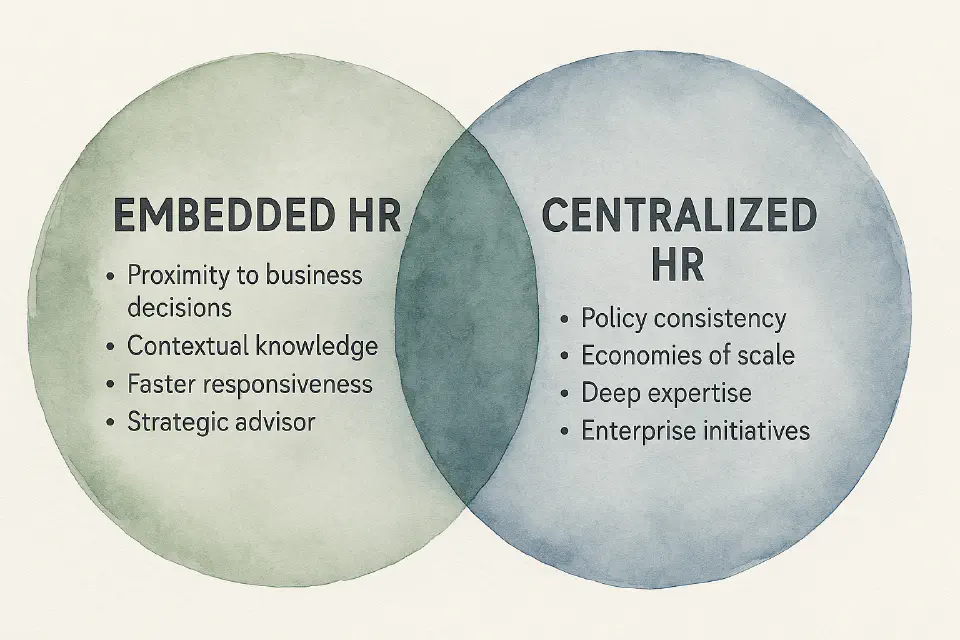
Embedded vs Centralized HR
Should HR sit close to the business or operate from a central hub? The answer lies in understanding the benefits—and limits—of each model.
One of the longest-running debates in HR organization design is whether HR should be centralized for consistency and scale—or embedded in the business to drive alignment and responsiveness.
Spoiler: there’s no universal answer. But choosing the right balance is key to delivering impact.
Strengths of Embedded HR
Embedded HR teams offer:
- Proximity to business decisions
- Deep contextual knowledge
- Faster responsiveness and support
- Higher trust and integration with leadership
They act as strategic advisors, not just service providers.
Challenges of Embedded HR
However, embedded models face challenges:
- Duplication of efforts (e.g. inconsistent policies)
- Risk of fragmentation across units
- Weaker connection to global HR strategy
- Role confusion: strategic partner vs admin support
Without clear governance, embedded HR can become overstretched and underpowered.
Strengths of Centralized HR
Centralized HR can:
- Ensure policy consistency and legal compliance
- Create economies of scale (e.g. shared systems, training content)
- Build deep expertise via Centers of Excellence
- Drive enterprise-wide initiatives (e.g. DEI, EVP)
It works well for standardized processes and system-driven services.
The Real Answer: Hybrid
Most modern organizations now use a hybrid approach—blending centralized scale with embedded agility.
Typical setup:
- Business Partners embedded in functions
- Centers of Excellence (CoEs) for expertise
- Shared Services for transactions and queries
This aligns with the Ulrich Model, but modern hybrids are more flexible, with networked teams, fluid roles, and technology-enabled collaboration.
Design Considerations
When deciding on the balance, consider:
- Business model: Fast-changing environments benefit from embedded HR.
- Geography: Global companies often centralize for consistency.
- Technology: Strong HR tech enables more centralization without loss of speed.
- Maturity: Younger companies may need more embedded HR; mature ones benefit from scale.
Moving Between Models
Some organizations shift over time:
- Startups often begin with embedded HR, then centralize as they scale.
- Post-merger companies may centralize first, then re-embed for culture integration.
- Agile firms may decentralize CoEs into squads to improve responsiveness.
The model is a living structure, not a one-time choice.
Bottom Line
The embedded vs centralized debate isn’t about picking a side—it’s about intentional design, clarity of roles, and building connective tissue across the HR function.
Future-ready HR teams are both close and scalable, specialized and integrated, tech-enabled and human-led.